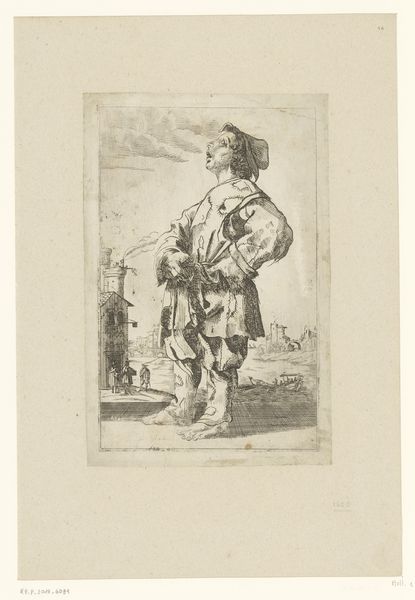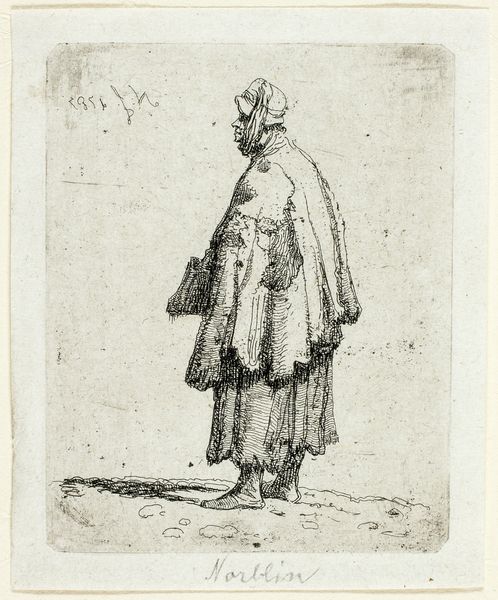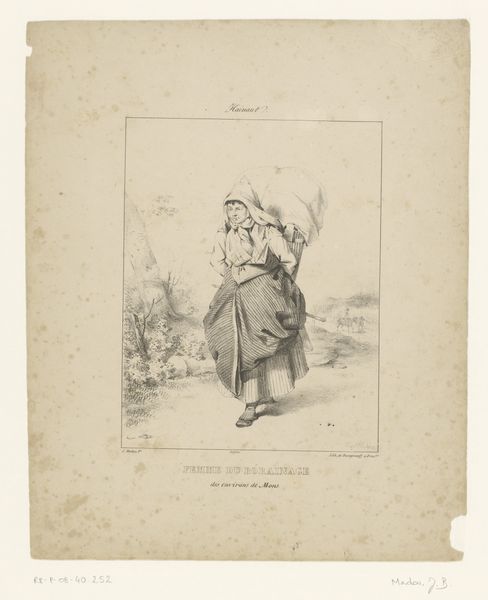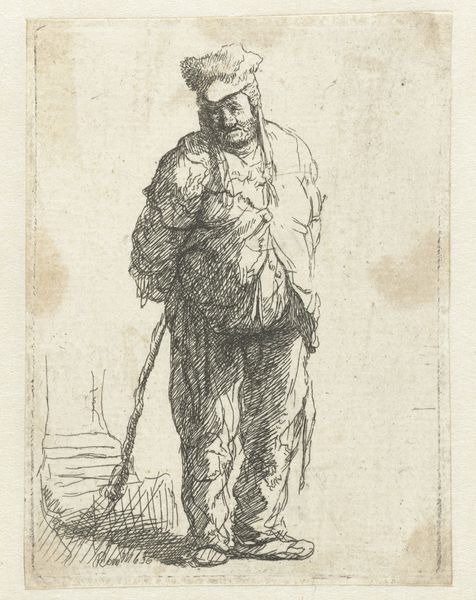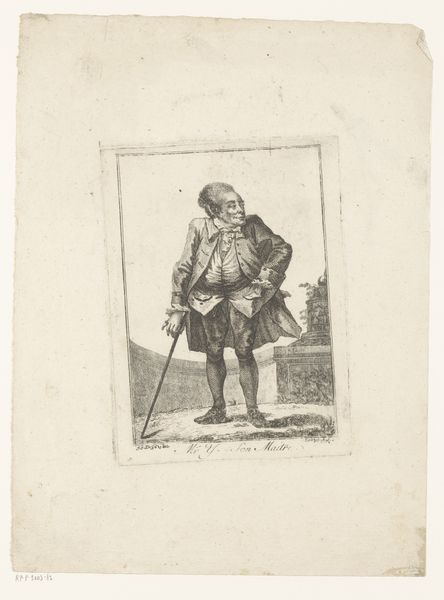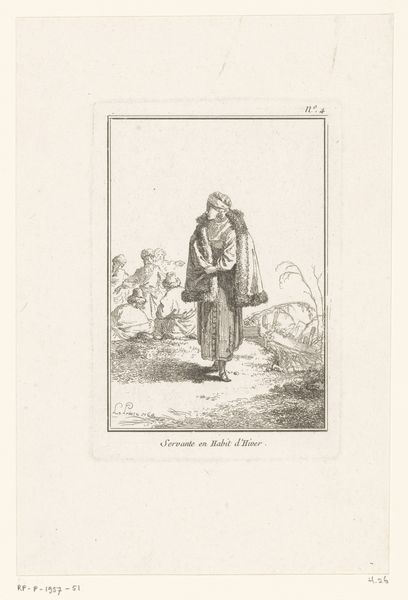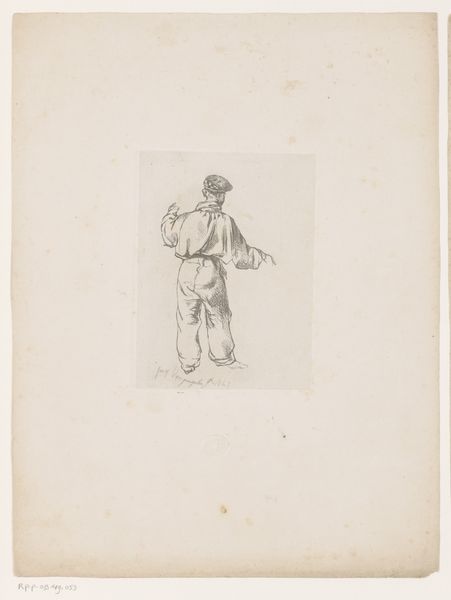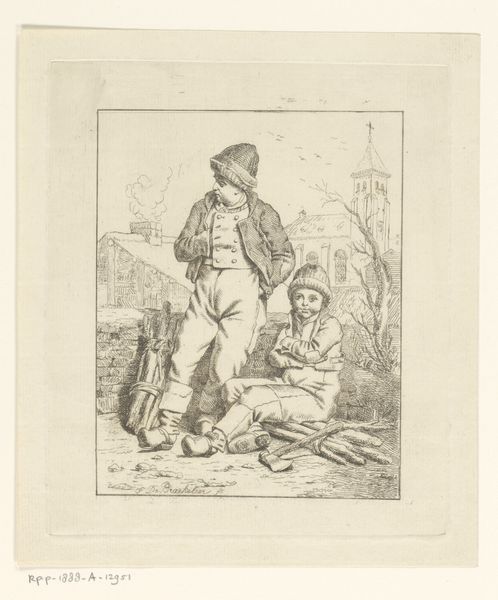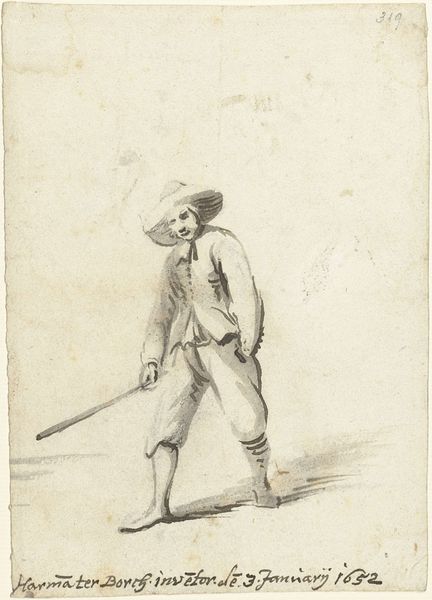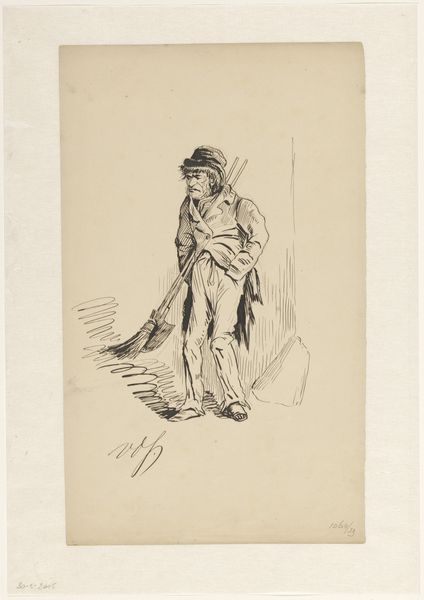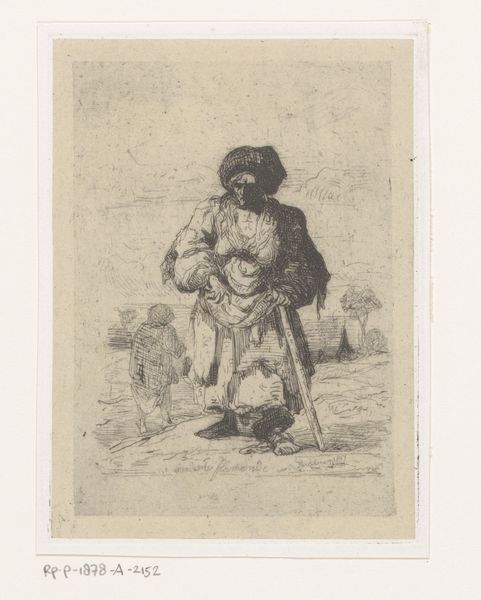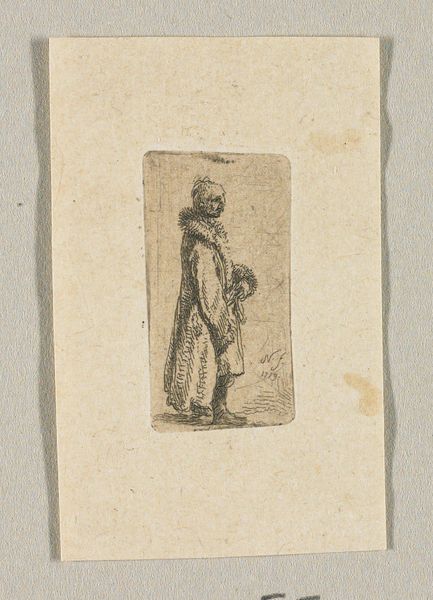
drawing, paper, ink
#
drawing
#
narrative-art
#
figuration
#
paper
#
ink
#
romanticism
Dimensions: height 355 mm, width 273 mm
Copyright: Rijks Museum: Open Domain
Editor: Here we have "Stroper met dode haas," which translates to "Poacher with a Dead Hare," a drawing in ink on paper made by Nicolas Toussaint Charlet in 1823. It's a rather unsettling image, quite simple in composition. What story do you think it is trying to tell? Curator: The drawing presents a child holding a dead hare. Considering the historical context, we might think about the evolving role of children in art and society at the time. Romanticism often depicted childhood as a state of innocence, yet here, we see a child associated with poaching, a practice often linked to poverty and survival. Editor: So it is about a more honest and difficult perspective on what life was really like at the time? Curator: Precisely. Instead of idealizing the lives of common people, artists started to depict them with the hardship they experienced. This shift mirrors broader changes in social consciousness and artistic movements. How do you think it comments on socio-economic disparity? Editor: Well, the child’s participation suggests the desperation of the family. Perhaps they are using any means necessary for survival, sacrificing innocence for necessity. The stark style conveys this rawness, lacking any sentimental gloss. Curator: It also points to shifting views on land rights and the accessibility of resources to the working class. The hare becomes symbolic. What do you see the house in the background meaning? Editor: That’s a good question. It emphasizes that there are much easier means for a person to obtain such resources, thus heightening that class division even further. The rich can provide for themselves through monetary resources, while this family can't afford not to poach. Curator: I hadn't thought of the contrast so acutely! It challenges the established order. This conversation really underscores how the seemingly simple image of a child can open up avenues for understanding larger social issues.
Comments
No comments
Be the first to comment and join the conversation on the ultimate creative platform.
